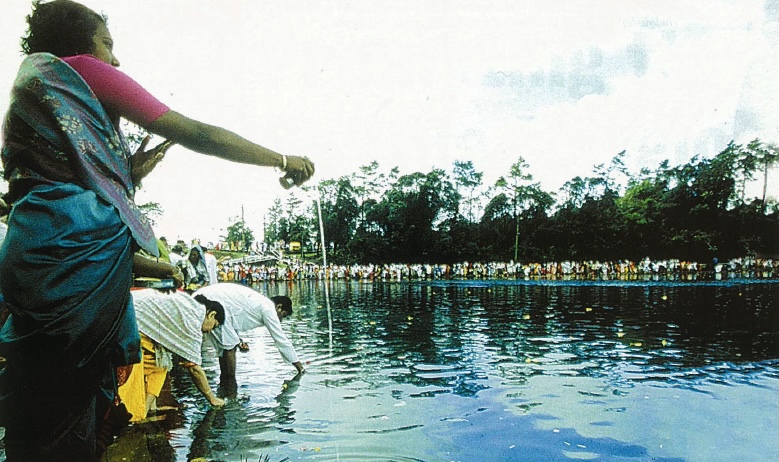By Gilles Flament
Every year thousands of Hindu pilgrims converge on Grand Bassin, the holy lake in the hills of Mauritius, a small island country just off the coast of Madagascar in the Indian Ocean. They are celebrating Maha Sivaratri, the great night of Lord Siva (see page 32) in February/March. Four days of celebrations and fasting lead up to the culminating ceremonies, when pilgrims hold all-night vigil in worship of God.
Most pilgrims begin the festivities with a thorough cleaning and decorating of their house and home shrine. Pilgrims from all over the island make the long journey, many by foot, singing bhajans along the way a trek that takes two days by foot from distant villages. Pilgrims stop, worship and rest briefly at each local temple they pass. Other Hindus give water or juice to passing pilgrims, who usually carry no food or water. As penance for misdeeds, many carry on their shoulders the kanwars, big multicolored bamboo frameworks which are like little temples, symbolizing submission to God and prayers for absolution.
In a dream back in 1887, Jhummun Giri Gossagne Napal, a temple priest, saw devas, angelic beings, dancing around the lake singing praises to Lord Siva. He also dreamed that Grand Bassin lake was mysteriously flowing from the sacred Ganga river in India. Ever since then, Grand Bassin has been called Ganga Talao, or “Ganga Lake,” and the yearly Maha Sivaratri pilgrimage, begun that year, continues strong to this day.
Before leaving the lake, everyone fills brass pots with holy water. This water is taken back home and poured over the Siva Lingam in the home shrine or the local temple.
